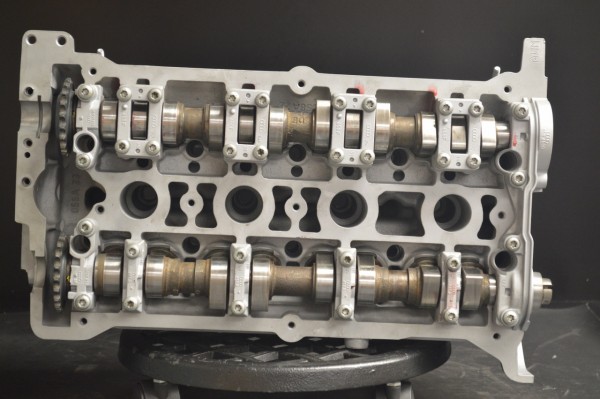Cylinder heads:
In an internal combustion engine, the cylinder head, also referred to as the head, sits above the cylinders on top of the cylinder block. In most engines, the head also provides space for the passages that feed air and fuel to the cylinder, and that allow the exhaust to escape.
The upper part of the engine is called the cylinder head, while the lower part is the engine block. The cylinder head sits on the engine and closes off the combustion chamber. The gap that remains between the cylinder head and the engine is completed by the head gasket. Cylinder heads also house the valves that direct airflow. Intake valves draw in fresh air, combustion occurs, then the exhaust valves allow burnt air fuel mixture to exit the combustion chamber.
Cylinder heads can be repaired when it’s cracked. The most common thing causing a cylinder head to crack is heat. This puts a large amount of stress on the cylinder head, leading to cracks.
What causes the overheating of a vehicle?
1. Air in the cooling system- Air in the cooling system may allow hot spots to form, where one part of the engine is much hotter than the portion measured by the temperature sensor. This happens because air cannot transfer heat as effectively as liquid can. If the air is trapped in one spot away from the coolant temperature sensor, the sensor may not pick up the hot spot. You will be unaware that your vehicle is running hot until damage is already done.
2. Failed water pump- If the water pump fails, coolant won’t be able to circulate through the engine properly. The coolant surrounding the water jackets in the head and block will be extremely hot. Without a pump, coolant will only be able to circulate via the natural convection process, which is much too slow to remove excess heat before the engine overheats.
3. Failed thermostat- An engine’s normal operating temperature is 85-99 degrees Celsius. A thermostat blocks off the coolant from the radiator until the coolant in the engine reaches the target temperature. The thermostat then opens to allow coolant at ambient temperature to enter the engine, cooling it until the thermostat is cold enough to close. If the thermostat is stuck open, your vehicle will probably run pretty cold. If the thermostat is stuck closed, your engine will overheat easily because the hot coolant has nowhere to go and cool off.
Symptoms of a damaged/ cracked cylinder heads:
- Oil leak- a Cylinder head contains oil in it. If the head is cracked, you can expect oil to leak out from it. You also should notice the oil light on the dashboard going on, indicating that the oil pressure is low. Sometimes the oil will leak internally and you would notice blue smoke coming from the exhaust.
- Coolant leak- If the cylinder head is severely cracked, then you will have coolant leaking out of it in addition to oil. This will cause the vehicle to overheat and will lead to further cracks in the head.
- Poor engine performance- If the cylinder head has a crack, that means compressed air are escaping from the combustion chamber. You will notice the engine is running a lot slower.
- Engine misfiring- Again, if your head is severely cracked, then the mixture in the combustion chamber will cause a misfire. This means the mixture won’t burn like it should. Your engine can also die or cut out while driving.
Here at V.A.G Spec Centre, we have specialized Audi and VW technicians to detect any problem regarding your cylinder head and to repair it. Trust the specialists!
Contact us today for inspections on those cylinder heads: BOOK ONLINE
Locate a VAGSPEC branch:









